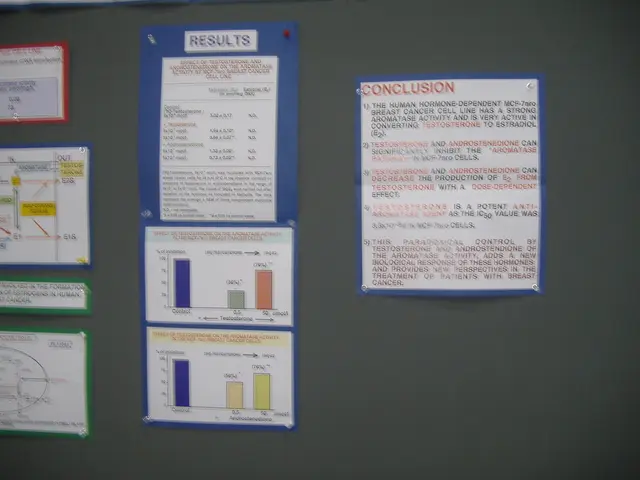Discerning Distinctions: A Deep Dive into Melancholy and Depression - A Detailed Explanation
Emotions, such as sadness and depression, are integral parts of the human experience, shaping our perceptions, decisions, and interactions. While these nuanced emotions may appear similar, it is crucial to recognize their differences to foster mental health awareness.
The Nature of Sadness
Sadness, a natural response to life's challenges, is a temporary emotional state experienced by everyone. It is usually triggered by difficult events, such as the loss of a loved one, the end of a relationship, or failure to meet goals. Characterized by feelings of unhappiness, disappointment, or grief, sadness can last from a few hours to several days or weeks. As circumstances change and time passes, the intensity of sadness typically subsides.
In terms of impact, sadness affects daily life but usually allows individuals to carry out their regular activities and responsibilities. Although it may dampen enthusiasm, people experiencing sadness can find comfort in conversation, hobbies, and emotional processing.
Understanding Depression
Depression, a clinical mental health condition, goes beyond fleeting feelings of sadness. It is a complex disorder that pervades a person's thoughts, emotions, and behaviors.
Based on the Diagnostic and Statistical Manual of Mental Disorders (DSM-5), depression features a variety of symptoms that persist for at least two weeks and significantly impair daily functioning. These symptoms encompass persistent sadness, loss of interest, sleep disturbances, fatigue, feelings of worthlessness, difficulty concentrating, and suicidal thoughts.
Different types of depressive disorders exist, including Major Depressive Disorder, Persistent Depressive Disorder (dysthymia), and Seasonal Affective Disorder. These varieties have unique criteria and characteristics.
The impact of depression on daily functioning is often more severe and pervasive than that of sadness. People with depression may struggle to maintain work performance, social relationships, and self-care routines. Simple tasks can become insurmountable challenges.
Key Differences Between Sadness and Depression
While sadness and depression may share superficial similarities, there are significant differences between these complex emotional states:
- Duration: Sadness is temporary and directly linked to specific events, while depression persists for weeks, months, or even years.
- Intensity and pervasiveness: Sadness is usually less intense and does not significantly affect all aspects of a person's life, whereas depression impacts nearly every thought, emotion, and behavior.
- Impact on daily activities and relationships: Sadness may temporarily dampen motivation, but depression significantly impairs a person's ability to function in daily life and maintain relationships.
- Physical symptoms and manifestations: Depression often comes with physical symptoms such as changes in appetite, sleep disturbances, and unexplained aches and pains, while sadness typically does not have such pronounced physical effects.
- Ability to experience pleasure or positive emotions: People experiencing sadness can still find joy, whereas those with depression often lose the ability to feel pleasure or positive emotions (anhedonia).
Can You Feel Depressed Without Having Depression?
Experiencing feelings of depression without meeting the clinical criteria for a depressive disorder is possible. This state, referred to as situational depression or depressed mood, is usually triggered by a specific life event or circumstance. Although these experiences can be intense and challenging, they differ from clinical depression in their duration, severity, and impact on overall functioning. However, prolonged or severe situational depression can potentially develop into clinical depression if left unaddressed.
Distinguishing Between Feeling Down and Having Depression
Recognizing the difference between normal mood fluctuations and clinical depression is essential for mental health maintenance and timely intervention. Key points to consider include:
- Normal mood fluctuations vs. persistent low mood: Everyone experiences ups and downs in their mood. If a low mood persists for weeks or months without improvement, it may indicate depression.
- Self-assessment tools and questions: Self-assessment tools can help individuals gauge their symptoms. Important questions to ask oneself include: - Have I lost interest in activities I used to enjoy? - Do I feel hopeless or worthless? - Have there been significant changes in my sleep or appetite? - Am I having difficulty concentrating or making decisions? - Have I had thoughts of death or suicide?
- Risk factors for developing depression: Certain factors can increase the likelihood of developing depression, including family history, chronic medical conditions, traumatic or stressful life events, certain medications, and substance abuse.
- Importance of professional diagnosis: If an individual is uncertain whether they are experiencing sadness or depression, seeking professional help is crucial. A mental health professional can provide an accurate diagnosis and recommend appropriate treatment options.
Recognizing the differences between sadness and depression is crucial for promoting mental health awareness and ensuring timely intervention. While sadness is a normal emotional response to life's challenges, depression is a serious mental health condition that requires professional attention and treatment. By distinguishing between these emotional states, individuals can take proactive steps to seek support and improve their emotional well-being.
- Within the realm of psychology, it's important to distinguish between fleeting feelings of unhappiness, often tied to specific events, termed 'sadness', and 'depression', a persistent mental health condition that significantly affects daily life and functioning.
- Unlike sadness, which is usually temporary and doesn't impair self-care or relationships, 'depression' can hinder work performance, social interactions, and even simple tasks, as it pervades thoughts, emotions, and behaviors.
- Self-care becomes particularly critical for maintaining mental health when dealing with prolonged or severe feelings of sadness, as these could potentially develop into clinical 'depression' if left unaddressed.
- The science of health-and-wellness emphasizes the importance of recognizing the distinction between experiencing 'depression' symptoms and the normal ups and downs of 'mood fluctuations'. By identifying signs such as loss of interest, sleep disturbances, or suicidal thoughts, one can determine if professional help is necessary for mental health management and timely intervention.








